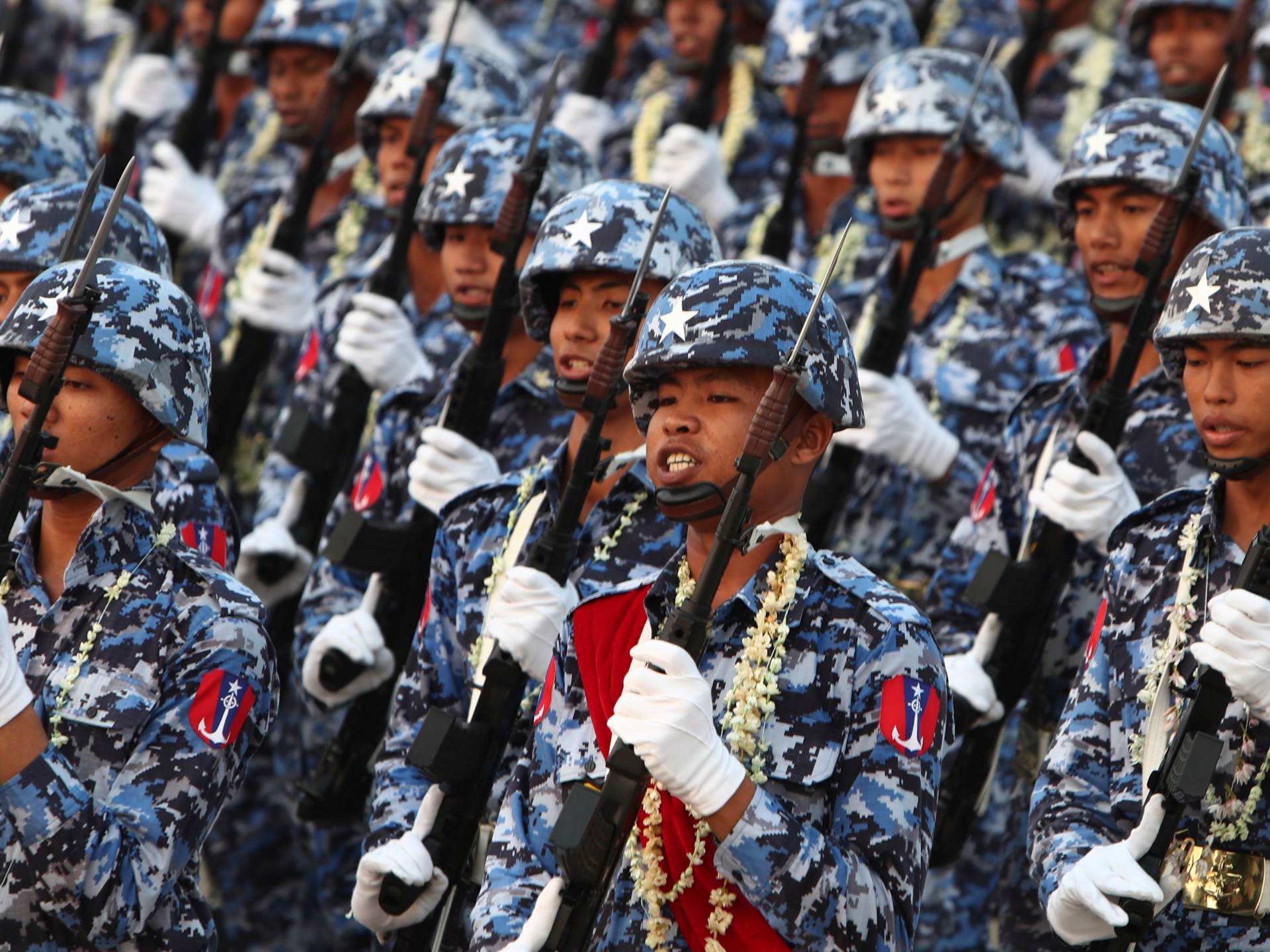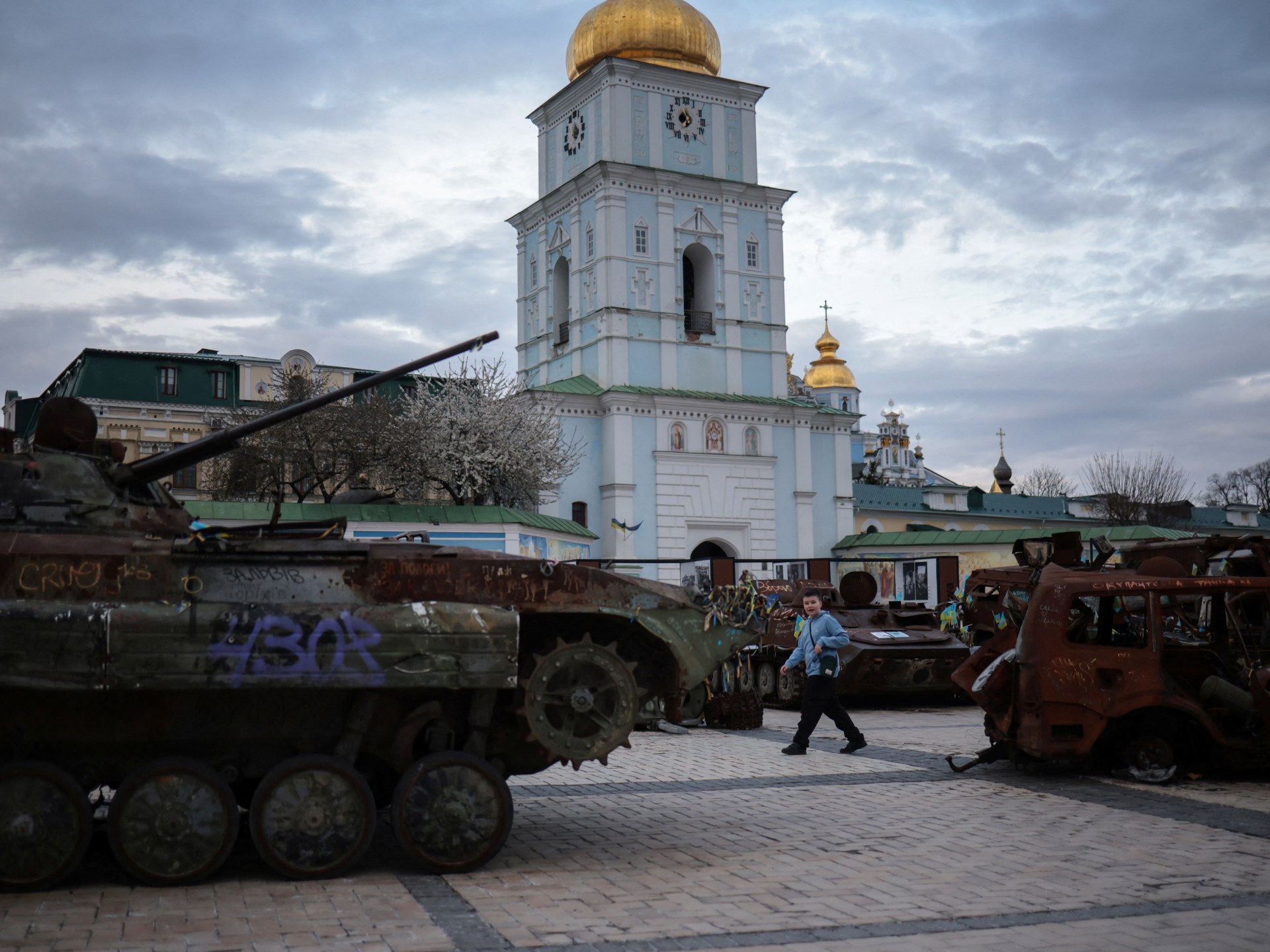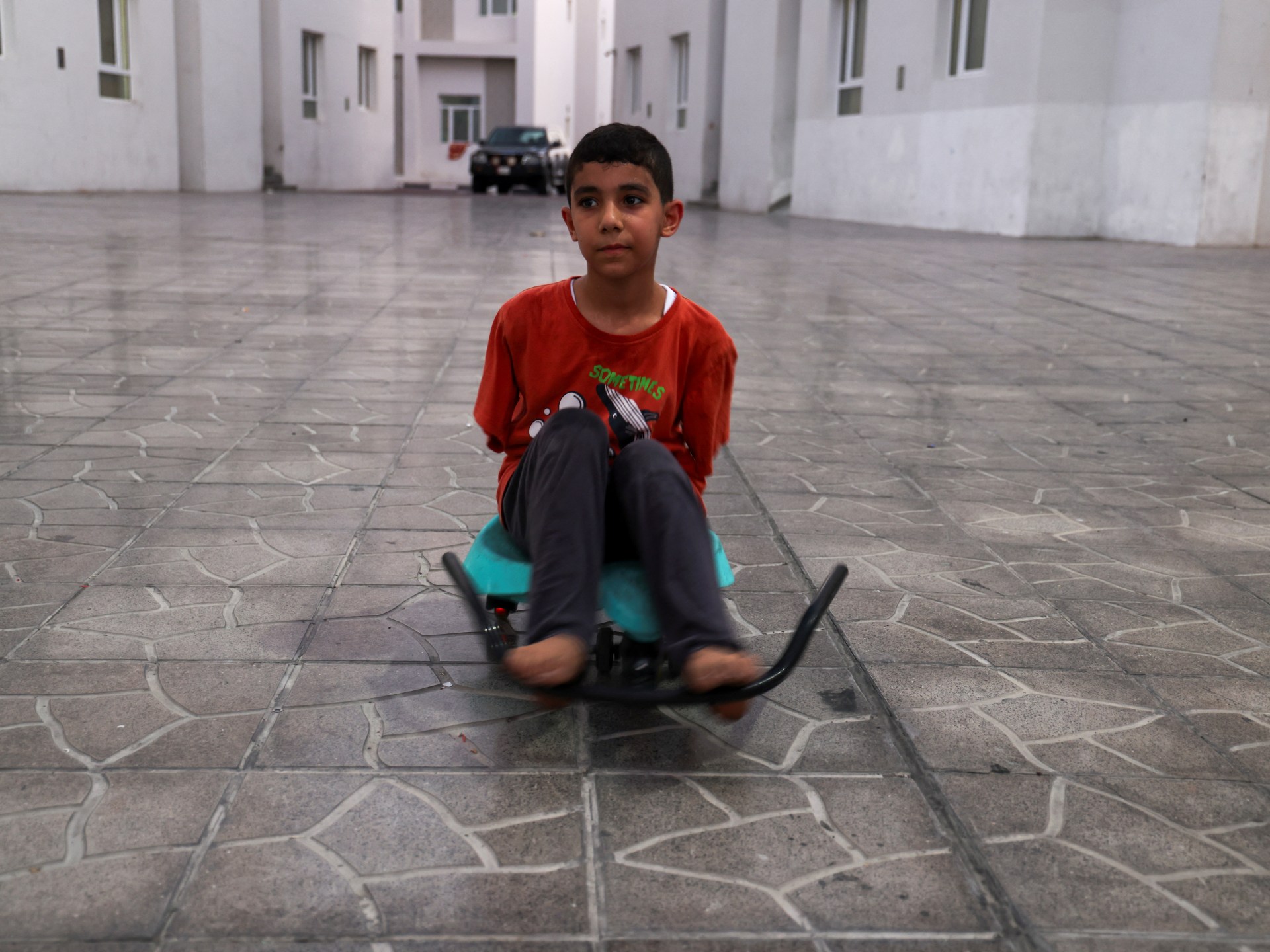Conflict Zones
Myanmar’s military drafts thousands in first year of conscription drive | Military News

Bangkok, Thailand – Aung, a high school English teacher, figured it was high time to leave Myanmar the day the military generals who took over the country stepped up enforcement of a long-dormant conscription law they had dredged up.
That was at the end of January, a little more than 11 months after the generals announced plans for widespread conscription, in order to cope with their military’s mounting desertions and battlefield losses to armed groups fighting back against their 2021 coup.
The first contingent of 5,000 conscripts into Myanmar’s military started their basic training one year ago this week.
Thousands of more conscripts followed, with the military giving itself even greater powers in January to press-gang any man aged between 18 and 35 or women between 18 and 27 into military service. Those who try to evade the draft face up to five years in prison.
At that point, 29-year-old Aung made the decision to flee Myanmar.
“I decided I must leave…as soon as possible,” he told Al Jazeera.
That very day, he tossed some clothes, medication and a few of his favourite books into a backpack and caught the next bus heading east out of Yangon, Myanmar’s sprawling commercial capital.
Dozens of military checkpoints, several bribes to soldiers and three nerve-racking days later, he was standing on the muddy banks of the Moei River, where, on a rickety wood boat arranged by local smugglers, he crossed over into Thailand.
A year into Myanmar military’s conscription drive, thousands of young men and women have done much the same, either heading for rebel-held borderlands out of the military regime’s reach or leaving Myanmar behind altogether.
Like Aung, they are refusing the order to fight for military rulers accused by the United Nations and countless human rights groups of waging a brutal campaign to cement their rule, by indiscriminately attacking civilian populations across Myanmar and dragging the country into a bloody civil war with no end in sight.
“They are destroying the whole country, they are killing our people, our civilians. I don’t want to be part of the killers. That’s why I don’t want to enter the military and I don’t want to obey the conscription law,” Aung told Al Jazeera recently from a safe house near the Thai-Myanmar border.
‘They don’t want to serve … like slaves’
The military has not released official conscription figures.
Having called up the 11th contingent of conscripts in March, the Myanmar military may be close to hitting its target of drafting 60,000 new soldiers in the first year of the programme, analysts tell Al Jazeera.
Analysts said the recruits will be welcome relief for the regime’s battalion commanders across the country, who have fallen well short of manning their units to full strength after four years of fighting a civil war that is estimated to have killed tens of thousands on all sides.
Richard Horsey, a senior adviser on Myanmar for the International Crisis Group, said new conscripts are getting harder and harder to round up.
While some answered the draft willingly in the first few months of it coming into force last year, that has changed.
“Over time, the authorities have had to resort to ever more draconian measures to get conscripts, including abducting young men from bus stops and other public places,” Horsey said.
“Local officials have been extorting money from potential conscripts in order to avoid the draft. Some officials have been killed when they entered communities attempting to compile draft lists or enforce conscription orders,” he said.
And instead of being posted to guard duty around military bases or other posts behind the front lines as first intended, many of the draftees are said to be getting some of the riskiest battlefield assignments.
“There are many reports of conscripts being given the most difficult and dangerous duties that more experienced soldiers are reluctant to do, such as being airdropped behind enemy lines. They are unsurprisingly failing at these tasks – either being killed, defecting or fleeing if they have the chance,” Horsey said.
The conscripts are also being rushed into battle with far less training than the soldiers they are joining or replacing, in some cases as little as three months, and treated more like cannon fodder than fighters, said Kyaw Htet Aung, who heads the conflict, peace and security research program at Myanmar’s Institute for Strategy and Policy, an independent think tank.
“For example, when they [the military] enter the new … area, firstly they just [send in] these kinds of conscripted persons as the first troops, and then the actual soldiers could be later on, [as] the second line,” he said.
‘Human shields’
Ko Ko, 24, who fled Myanmar to evade conscription in March last year, only weeks after the draft was announced, told a story that echoes Kyaw Htet Aung.
“In the battlefield, they use the [conscripts] like human shields – to step on bombs, to dismantle bombs, something like that,” he told Al Jazeera from northern Thailand.
“That’s why no one wants to go to the military; they don’t want to serve … like slaves,” he said.
Ko Ko says his parents paid a family friend, with a high position in the regime’s immigration bureau, about $300 to arrange for him to pass through the immigration counter at Yangon International Airport without getting stopped so that he could leave the country and avoid the military draft.
A friend was not so fortunate, Ko Ko said.
Rather than serve in the military after receiving his draft papers, he took his own life, Ko Ko said.
Despite the compulsory call-up, analysts say the draft has failed to turn the tide in a grinding civil war that has mostly seen a string of losses for the military.
In December, months into the conscription of thousands of recruits, the military lost another regional command base to rebel forces, its second since the coup in 2021, in Rakhine state.
By some estimates, the military may only be in full control of less than a quarter of the country, though it still has a firm grip on major cities such as Yangon, Mandalay and the capital Naypyidaw.
The conscription drive has given some relief to diminished battalions, boosted morale among officers, and allowed for some defensive battlefield operations.
“But it is certainly not a silver bullet for a military that is experiencing historic weakness,” the Crisis Group’s Horsey said.
Fighting to a standstill with recruits
Even with thousands of new troops, Kyaw Htet Aung says, the military has managed to launch only a few new offensives or counteroffensives to retake lost ground.
Primarily, the regime continues to rely on long-range artillery and air attacks for most of its offensive fighting operations. At most, he adds, the draft has helped the military minimise losses.
That may be the regime’s goal, he added: Use drafted soldiers to help hold as much ground as possible and play for time while the generals try to end the civil war at the negotiating table, with help from China, their main backer.
“I think this [conscription] law has become part of that strategy,” he said.
The armed groups arrayed against the military called for a truce following the devastating earthquake that hit Myanmar on March 28, killing more than 3,600 people. The military at first ignored the call for a ceasefire, carrying out air raids near the epicentre around Sagaing city, but later said it would comply.
Each side has since accused the other of violating the agreement.
Recent local news reports say one of the armed groups, the Myanmar National Democratic Alliance Army (MNDAA), would be turning over Lashio, the largest city in northern Shan State, to the Myanmar military after coming under pressure from China.
The MNDAA seized the town, home to the military’s northeastern command base, last year in what was a major blow to the regime.
In the relative safety of a safehouse in Thailand’s far west, Aung continues his work as a teacher, instructing students back in Myanmar over a spotty internet connection for a parallel school system set up by groups opposed to the military.
Having crossed the border illegally, he still lives in fear of being arrested by Thai authorities and sent back to Myanmar – and directly, he believes, into the military service he fled to avoid.
“I [have] heard there are many people who are deported back to Myanmar, are detained and arrested and sent to the military,” he said.
“If I am forced back to Myanmar, it’s very, very clear that I will be [treated] like that, and I don’t want to be.”
Conflict Zones
Could an earthquake shift the balance in Myanmar’s civil war? | Military News
Bangkok, Thailand – As Myanmar slowly recovers from the magnitude 7.7 earthquake that killed thousands in March, an even greater catastrophe continues to shape the nation’s future – this one man-made.
Myanmar remains gripped by a civil war and after four years of fighting the military regime finds itself increasingly encircled.
But the impact of the earthquake could prove decisive for the conflict in the coming year.
Striking in Myanmar’s central Sagaing Region on March 28, the quake killed at least 3,649 people, with more than 5,000 injured and 145 still missing, according to figures from the military government.
The seismic shock flattened houses, factories, Buddhist pagodas, apartment blocks and brought down bridges and ripped up roads in Sagaing city and nearby Mandalay.
It also disrupted electricity supplies to factories producing munitions for the military, said Tin Lin Aung, a former major in Myanmar’s army who defected to the resistance movement in 2022.
In a clear sign that military supplies are stretched, bullet and artillery casings recently captured from government forces bear this year’s manufacturing date, Tin Lin Aung said.
“When I was in the military, we used to joke that some of the bullets were older than us,” he said.
“Now they are being used straight away,” he said.
The reported interruption to the military’s ammunition production comes as areas the army still controls in Myanmar are surrounded on almost all sides by longstanding ethnic armed groups and newer armed opposition forces.
Despite this, the military maintains an iron grip on the country’s major cities and core critical infrastructure.
Hemmed into urban strongholds, the military has tried to reverse its losses through indiscriminate air strikes and burning villages in rural areas – a campaign the United Nations suspects involves war crimes.

‘More momentum than the military’
Sagaing city was devastated by the quake and it remains under military control, while much of the surrounding countryside is governed by a patchwork of resistance militias – such as the People’s Defence Force (PDF) – which are loosely coordinated by the opposition National Unity Government (NUG).
The NUG declared a truce in earthquake-affected areas until April 20, except for “defensive operations”, yet the military’s operations have continued.
According to the NUG, the Myanmar military’s aerial and artillery attacks killed at least 72 civilians between the quake striking on March 28 until April 8. Two more civilians, including a 13-year-old girl, died from bombing by military aircraft on April 10, the Myanmar Now news outlet reports.
A Sagaing-based PDF fighter who requested anonymity said some rebel units had pivoted to relief efforts in central Myanmar even though their military adversaries were taking advantage of the lull in battle.
“Since the quake, the military has used the Sagaing-Monywa road more confidently because of the truce,” she said. But PDF forces in Sagaing expect fighting to intensify after the April truce is over.
“The PDF has more momentum than the military here,” she told Al Jazeera, adding that the NUG is now “coordinating better with ethnic armed organisations”.
“There will be more fighting in coming months,” said Ko Ko Gyi of the Sagaing PDF’s Battalion 3.
Regional security analyst Anthony Davis said he doubted the earthquake would distract the military from its strategic objectives, adding that most soldiers had stayed in their garrisons rather than help with relief efforts.
“The military isn’t taking time off to save people. They’ll keep up the air strikes and, where possible, launch ground offensives to weaken the PDF,” Davis said.
But it is western Rakhine State – largely spared from the earthquake – that is still the most consequential battleground currently, he said.
There, the rebel Arakan Army (AA) has clashed with the military’s forces around the state capital Sittwe and Kyaukphyu, the site of a key pipeline that transports gas from across Myanmar to China.
The AA has simultaneously pushed out of its home territory in the west of the country and into Myanmar’s central heartlands in Magwe, Bago and Ayeyarwady regions, Davis said.
“They are the swing player who can significantly move this conflict one way or another,” he added.
Commanding an estimated 40,000 soldiers, the AA has a proven record of defeating the military regime’s forces.
In eastern Myanmar’s Kayah State, a senior resistance commander said the earthquake had underscored the suffering of displaced communities who “bear the brunt of the ongoing wars”.
“The side who’s willing to care for the people can sway public opinion and will succeed in the coming battles,” he said.
In the north and northwest, the military is on the back foot.
The Kachin Independence Army captured Indaw town in the northern Sagaing Region on April 7 after an eight-month siege, despite declaring its own post-quake truce. Chin resistance forces recently gained control of Falam township in western Myanmar – though they had not announced any ceasefire.
Political analyst Kyaw Hsan Hlaing said the military is still grappling with the aftermath of the earthquake and that may create openings for the AA and others to seize more towns.
“However, any such gains would likely be incremental, as the military’s longstanding control and ability to adapt, especially in regions like Bago and Magwe, even under crisis conditions remain significant,” he said.
“In the long term, the earthquake is unlikely to fundamentally shift the balance of power in Myanmar,” he said.
‘Divine intervention’
While the earthquake has not dealt a decisive blow to military rule, the quake has delivered a psychic shock to the regime’s generals.
In a country where astrology and superstition guide the highest political decisions, many interpret the natural disaster as a cosmic rebuke against Myanmar’s military leadership.
“They see this earthquake as divine intervention – punishment for the mistakes of the king. From what I hear, they are not blaming him [regime leader Min Aung Hlaing] directly. But there are questions about his leadership and capacity,” said former major Tin Lin Aung, who still maintains contacts within the secretive military establishment.
According to Tin Lin Aung, the regime has ordered civil servants nationwide to recite a protective Buddhist chant nine times daily for nine consecutive days. The number nine has auspicious symbolism in Buddhist tradition.
He also described growing confusion within the ranks over the regime’s response to the earthquake – appealing for international aid and assistance, declaring a truce, while also continuing its attacks.
“They know the people hate them more and more, and their leader seems lost,” he said.
Richard Horsey, senior Myanmar adviser at the International Crisis Group, said even if Myanmar military’s commander-in-chief Senior General Min Aung Hlaing dismisses these supernatural interpretations, the fact that his inner circle takes them seriously creates real vulnerability. Instead of causing an internal coup, he suggested the quake as a bad omen would more likely signal the erosion of Min Aung Hlaing’s authority and the rise of open criticism.
“You go from there to people feeling they can just ignore his orders and do their own thing because everyone else agrees with them, not him,” he said.
Political analyst Kyaw Hsan Hlaing said some sources suggest that beliefs in the quake as a portent of collapse for military rule may be used to push the narrative that the regime needs to “act decisively to regain control”.
Superstition is just one of many factors shaping the military’s decisions in the conflict, he added.
The earthquake has also “done enormous damage to the basic fabric of Myanmar,” Horsey said, noting that Mandalay’s residents are potentially facing relocation due to extensive housing damage.
Given the scale of the quake, it would likely affect the civil war – “but in ways that are hard to predict”, he said.

Criticised for its ineffectual and disinterested response to earthquake victims, along with continued attacks at a time of national emergency, the military’s poor reputation has plummeted even further in the eyes of the people and its adversaries.
The powerful ethnic armed groups involved in the conflict will probably be even more unwilling to negotiate for peace with the military following the quake, Horsey said.
“Even if you could get a spirit of compromise, which seems not to exist”, few would believe the military’s sincerity in adhering to any peace deal or ceasefire document.
“Who would believe that piece of paper,” Horsey said, when it is signed by a military that is considered “so illegitimate and so incompetent.”
Conflict Zones
Trump says US may ‘pass’ on helping end war if Russia, Ukraine resist deal | Russia-Ukraine war News

President Donald Trump says the United States will “take a pass” on trying to resolve the Russia-Ukraine war if either Moscow or Kyiv makes it too difficult to end the conflict.
Trump was speaking after US Secretary of State Marco Rubio commented – following talks with European allies in Paris – that Washington would “move on” if a truce did not seem “doable” within days.
The US president refused on Friday to cast blame on either Russian President Vladimir Putin, who ordered the February 2022 full-scale invasion of pro-Western Ukraine, or Ukrainian President Volodymyr Zelenskyy. But he insisted both sides had to make progress.
“Now, if, for some reason, one of the two parties makes it very difficult, we’re just going to say: ‘You’re foolish. You’re fools. You’re horrible people’ – and we’re going to just take a pass,” Trump said.
“But, hopefully, we won’t have to do that.”
Rubio further suggested on Friday that Trump’s patience towards the negotiations is running thin.
“If it’s not possible, if we’re so far apart that this is not going to happen, then I think the president is probably at a point where he’s going to say, ‘Well, we’re done,’” he said.
Trump told reporters on Friday, however, that he did not want to say he was walking away from the talks. He said he still believes there is a good chance to end the conflict.
“It’s coming to a head right now,” he said.
US Vice President JD Vance also said he was “optimistic” a resolution could be reached, while speaking on a trip to Rome.
‘Trying to help’
Ukraine has agreed to a full temporary ceasefire and accused Russia of stalling on a deal to get a better negotiating position.
Putin last month rejected a joint US-Ukrainian proposal for a full and unconditional pause in the conflict, while the Kremlin has made a truce in the Black Sea conditional on the West lifting certain sanctions.
When asked if Putin was stalling, Trump, who held direct talks with the Russian leader in February, said: “I hope not … I’ll let you know soon.”
Trump also denied he was being “played” by the former KGB agent, who denied Russia was going to invade right up until the eve of the attack.
“Nobody’s playing me, I’m trying to help,” Trump said.
Russia’s Foreign Minister Sergey Lavrov said in an interview with the Kommersant newspaper published on Monday that it is “not easy” to agree on “key components” of a peace deal.
He did, however, concede that the Trump administration is trying to understand the “root cause” of the conflict, which he said was triggered by “the actions of Washington and Brussels” in having “brought the current regime to power in Ukraine”.
Fighting continues
Amid ceasefire negotiations, on the front line on Friday, a Russian missile strike killed one person in the northeastern Ukrainian city of Kharkiv, with a separate drone attack killing another person in the nearby city of Sumy.
At least five children were among dozens of people injured in Friday morning’s attack on Kharkiv that damaged 15 residential buildings, a business and an educational facility, according to Kharkiv Mayor Ihor Terekhov and emergency services.
Reporting from Kyiv, Al Jazeera’s Zein Basravi said Russia also targeted Lviv, Dnipro, Mykolaiv and Kyiv.
“We saw multiple missile, drone, artillery and rocket attacks in cities across the country about 5am local time when curfews come to a close and people begin their daily lives,” he said.
“[In Kharkiv], civilian infrastructure was damaged, one person was killed, and 74 were injured. Of the 74, five were children,” Basravi reported.
President Zelenskyy said on Thursday that although Russia had seemingly scaled back its targeting of energy infrastructure, the overall volume of missile and drone attacks remained unchanged. It is striking Ukraine’s civilian sites instead, he added.
Russia has said it had hit “key drone production sites” and Ukrainian military airfields.
Moscow also warned on Friday of potential escalation if Germany proceeds with plans to send Taurus long-range missiles to Ukraine. Speaking at the United Nations on Thursday, Russia’s ambassador, Vassily Nebenzia, declared that such a move would mark Germany’s direct entry into the war.
“These countries are waging a war against Russia using their proxy forces,” he said. “Delivering Taurus missiles would be another step toward escalation.”
Conflict Zones
‘How do I live like this?’ asks Gaza boy who lost arms in Israeli attack | Gaza News

An image of Mahmoud Ajjour, 9, who was severely wounded in an Israeli strike, won the 2025 World Press Photo of the Year award.
A Palestinian child who was severely wounded in an Israeli drone attack on Gaza last year, and who was pictured in an image that won the 2025 World Press Photo of the Year award, says he has been struggling to adapt to life since losing both his arms in the explosion.
Speaking to Al Jazeera from Doha, Qatar, where he has been receiving treatment, nine-year-old Mahmoud Ajjour recalled the moment the bomb exploded, targeting his home in March 2024.
At first, Ajjour, who hails from Gaza City’s old town, said he did not realise he was wounded.
“I thought I had simply fallen. But I found myself on the ground, exhausted, and wondering what had happened,” he told Al Jazeera.
In reality, one arm “flew off, and one flew and fell right beside me”, he added.
Still unaware that he had sustained serious wounds – wounds that mutilated his entire body – Ajjour said he looked around and saw his arms. Although they looked familiar, his brain still could not comprehend that they had been blown off.
“My mother then told me that I lost my arms,” Ajjour recalled. “I started crying. I was very sad, and my mental state was very bad.”
His mental health deteriorated further when he, like many others in Gaza, had to undergo surgery without anaesthetics due to a severe lack of medical supplies. Throughout the war, Israeli forces have largely kept vital border crossings shut, preventing the entry of much-needed medical supplies, as well as food and other aid, including fuel.
“They performed surgery on me while I was awake,” Ajjour said, the shock still evident in his voice.
“I couldn’t bear the pain, I was screaming very loud. My voice filled the hallways.”
‘Everything is difficult’
Ajjour is one of thousands of children in Gaza who are suffering life-changing injuries due to relentless, indiscriminate Israeli bombardment.
According to the United Nations Children’s Fund, more than 10 children each day have lost one or both of their legs since October 7, 2023, when Israel launched its ongoing genocide in Gaza.
That is more than 1,000 children.
“Gaza now has the highest number of children amputees per capita anywhere in the world – many losing limbs and undergoing surgeries without even anaesthesia,” UN Secretary-General Antonio Guterres said in December.
Ajjour is now learning to write, play games on his phone, and dress himself using his feet – but still needs special assistance for most daily activities.

He now longs for the days when his arms were still intact.
Before the attack, Ajjour said he used to go to the market and buy his mother vegetables and food she needed.
“Now, everything is difficult, including feeding myself, helping myself to the bathroom … but I try my best,” he said. “I manage my life like this. I make it work.”
Ajjour dreams of a future where he can return to Gaza and help rebuild the devastated enclave.
He hopes the world can “end the war on Gaza”.
“We want to live on our land. We don’t want the Israelis to take it,” he said.
“People are dying there [in Gaza]. And my home was bombed. How could I live like this?”
Israel’s ongoing assault on the besieged and bombarded territory has so far killed more than 51,000 Palestinians and wounded at least 116,505 others, according to Gaza’s Ministry of Health.
It has also forcibly displaced most of its 2.3 million strong population, ravaged most of the land, damaged basic infrastructure and dismantled its already-struggling healthcare system.
-

 Conflict Zones2 days ago
Conflict Zones2 days agoHaiti in ‘free fall’ as violence escalates, rights group warns | Armed Groups News
-

 Lifestyle2 days ago
Lifestyle2 days agoBelievers say microdosing psychedelics helps them. Scientists are trying to measure the claims
-

 Sports2 days ago
Sports2 days agoJu Wenjun: Chinese grandmaster makes history by winning fifth Women’s World Chess Championship
-

 Middle East2 days ago
Middle East2 days agoHamas accuses Israel of weaponising aid as Gaza’s hunger crisis worsens | Gaza News
-

 Lifestyle2 days ago
Lifestyle2 days agoPicking a team from bars to beam and hoping for 10s: Fantasy leagues in gymnastics are a thing
-

 Middle East2 days ago
Middle East2 days agoPalestinian photographer Samar Abu Elouf wins world’s top photo prize | Gaza News
-

 Sports2 days ago
Sports2 days agoArsenal reaches first Champions League semifinal in 16 years, with Inter Milan also advancing
-

 Africa2 days ago
Africa2 days agoEuropean Union announces new asylum measures



